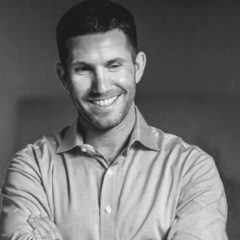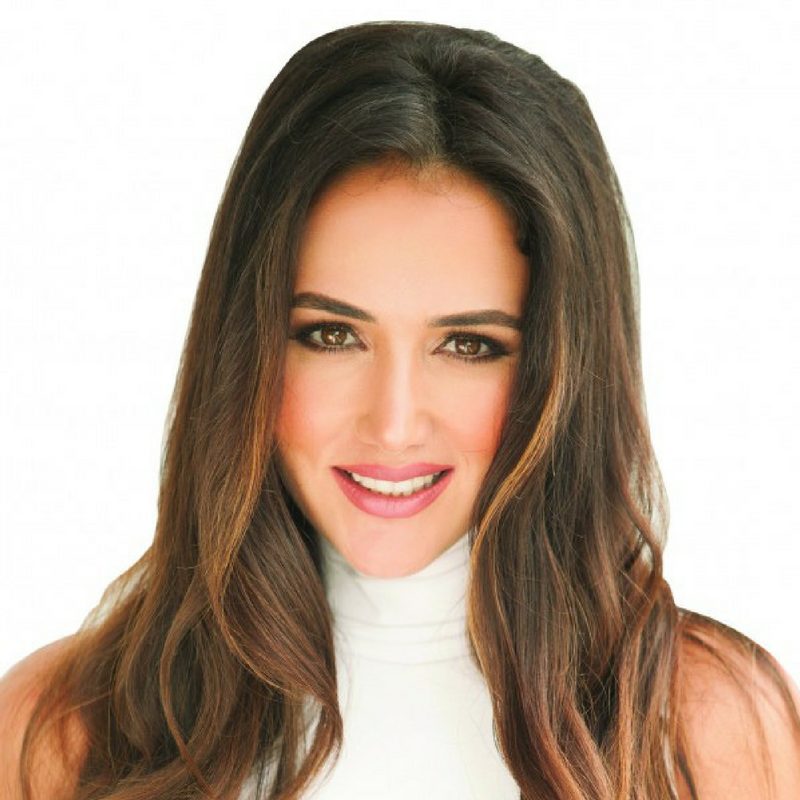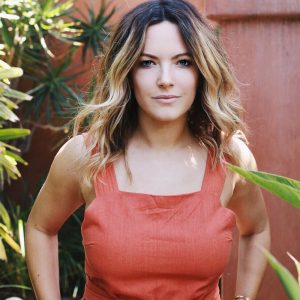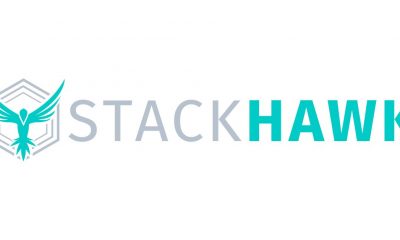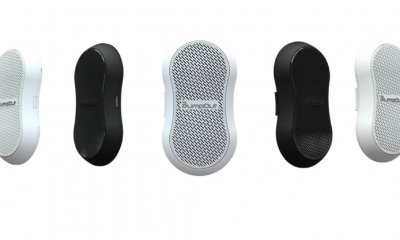Business
Advice From Millennial Entrepreneurs
Published
5 years agoon
By
Jie Kuang
Millennials are underrated when it comes to work ethic. As the biggest age group in the country at 80 million strong, entrepreneurs sprout from all over, creating jobs for a variety of industries. Success comes in many forms, and we at Owner’s Magazine had the opportunity to talk to a few successful entrepreneurs about culture, motivations, and how to achieve your goals. Many of these entrepreneurs are founders and CEO’s of their own businesses, and they are here to give some advice on how to grow.
Greg Star, Founding Partner of Carvertise
“Why finding a mentor is the worst advice I ever received. You may be confused by this title. After all, a mentor is crucial for personal development. They can provide hard earned wisdom that only comes from experience facing similar challenges that you are up against. Additionally, a mentor can open up a network of contacts that you would not meet otherwise. So why would finding a mentor be considered bad advice? Isn’t this a no brainer? The answer is no- and here’s why.
Finding a single mentor limits your thinking. You should be trying to find multiple mentors. Here are three important benefits you get from surrounding yourself with a team of mentors as compared to one.
1. Different viewpoints– Having several mentors with different specialties to bounce problems off of will give you broader insight on the problems you are facing. Your one mentor may have a biased that can only be seen if your getting multiple points of view.
2. Larger network– A mentor can open up a lot of doors to a lot of key introductions for you from a personal and professional standpoint. Thus, the more mentors you have, the larger your network becomes.
3. It teaches you how to ask for help– This is probably the best lesson for finding multiple mentors. The act of constantly reaching out to different people asking help is an incredibly important skill. It teaches you to put your ego aside, which is incredibly important in developing personally and professionally. I personally reach out for help 3-4x a month to people who I think I can learn from, and the benefits have been exponential.
Bringing it together:
Next time someone tells you to find a mentor, stop them, and let them know why they are wrong!”
Andrew Nakkache, Co-founder & CEO of Habitat LLC
“7 core attributes or traits that I think are important for entrepreneurs (at least for me):
Share Ideas – I’m big on sharing a raw idea with everyone. Ideas are typically worthless, and the only way they get better is through talking to enough people (and customers). 9/10 ideas I have are terrible.
Delusional Optimism – You need to have a deep-seeded belief that you and your team are exceptional, and you are the ones that are going to fix the problem you’re solving.
Everlasting Paranoia – Simultaneously, you have to believe that what your building is worthless
Shameless Persistence – Again, tell everyone your idea and ask everyone who you think can help..for help. Most people like to help entrepreneurs, those relationships can turn into mentors.
Impulse Control – You need to have the ability to resist temptation.
Level Headed – This ties into Impulse Control, you’re going to have a lot of internal battles. It’s important to keep a level head, and your team needs to see that.
High Integrity – Always be thankful and courteous to everyone you meet. You never know how someone may be helpful down the road.”
David Feinman, Co-founder & CEO of Viral Ideas
“For new entrepreneurs, it is important to just get started, to do something that you can take to market. Be it a product, a consulting concept, or something small, that you are able to take to a few customers that are willing to pay you something, for your idea or for your concept so that you can test, learn, and grow from that initial starting base, and really build on top of that.”
Benjamin Fuller, Associate of Montgomery McCracken’s Business Department
“While every situation is different, I often recommend that the partners in start-ups have honest and frank discussions their goals. I find that they rarely have accounted for disagreement and difficult circumstances that are likely to arise in any business. It is always easier to have a discussion about these issues up front.
With respect to growing companies, I counsel them on how investment may dilute their equity. For founders of any company it is important to understand what they are giving up in order to gain investment. The bottom line is it’s important to include your lawyer in these types of conversations early and often. We often act as the facilitators of these discussions and can provide specific insight sometimes based on “war stories” – both good and bad – from past representations.”
Stephen Blackwell, Chief Strategy Officer of the Billboard-Hollywood Reporter Media Group
“The Great Recession created a lot of uncertainty for my generation and how it viewed itself and its prospects. The status quo didn’t appear sustainable at the time and it forced a lot of us to think outside the box – and ultimately create jobs during that time. To me, success has been about educating yourself at length about the industry you’re entering and then taking the extra time to get creative. Find that niche your industry is looking for. It’s probably hiding in plain sight.”
Tony Cho, President of Metro 1 Properties

Erica Dias, Co-Owner of The B Firm
“Never give up! Dreaming isn’t going to get you anywhere. DOING will! You’ve got this! Faith It Until You Make It!”
Ryan Shear, Principal of Property Markets Group
“I’ve found that so much of what dictates success in real estate development as a profession and an industry ultimately boils down to effective management, whether it’s managing time, resources, personnel, etc. From the beginning, I recognized an opportunity to do things at PMG differently from the typical development shop. We have a great blend of really experienced industry veterans working hand-in-hand with ambitious young professionals that has left us with a very atypical culture relative to the other companies in our field. We have fun together and support one another, but we are also constantly pushing. When it comes to incentivizing employees based on project performance, I think we are more aggressive than just about any other developer of our size and that gets the team to reach for that higher gear. I am very demanding of my team, but they have become even more demanding of themselves and that is what makes me most proud.”
Karen Elmir, CEO of The Elmir Group
“To maximize sales, one must be creative and think outside the box. Push beyond ordinary marketing tools by investing in your listing and always look for new channels of communication and sales. Remember, it takes money to make money. Additionally, professionalism and dedication are key. Make sure to consistently be knowledgeable about your product, as well as the state of the market and its trends.”
Ali Grant, Founder of Be Social
“As your business expands, you will soon understand the need to scale efficiently. It can be difficult giving ownership to others, but putting trust in your team allows you to conquer, grow, and scale.”
Elizabeth Convery, Founder of Very Real Estate
“I have been fortunate to build my entire book of business at VERY Real Estate on word-of-mouth referrals. It is my belief if you do right by one person, and put their needs above your own, treating them with respect, dignity, and acting in a thoughtful way on their behalf, that you leave a lasting and memorable impression. Naturally, when people have a positive experience, they tell their friends and your business grows like a tree. I strive to always have people smile when they hear my name. Making someone feel special is the key to building trusting, lasting relationships and having a reputation that leaves people feeling great.”
Zubin Teherani, Co-Founder of LeagueSide
“Sell your idea before you sell your product. Youth sports sponsorships have unique advantages over other forms of marketing. They provide a captivated audience for hours every weekend, guarantees digital and in-person impressions to the same group of families, and supports the families you’re marketing to by subsidizing their costs. We always, always, always, start by selling the merits of sponsoring youth sports organizations before we get into how it works. Selling the big picture helped us close big clients and investors in our early days before we ever built a product.
“Fake it till ya make it” – When we started LeagueSide, we focused on selling before we ever built a product. We pitched clients, youth sports leagues, and investors and got yeses before we committed to LeagueSide full-time. This validated that this was a business worth pursuing, saved us months of time, and gave us perfect clarity of what we needed to do next.”
Jenny Cipoletti, Founder of Margo & Me
“The Shift: I started reaching out to stylists to work with them on weekends. I worked PR during the week and started styling on the weekends with whoever needed an assistant at the time. From there, I started to realize I really enjoyed the styling more. I woke up at 25 and I had a grocery list of all of these amazing things: my health, my boyfriend, and my puppy, but I just wasn’t happy. I didn’t know what was wrong with me. I was alive but I wasn’t living. I was just going through the motions.
That Quit Moment: I said to myself, if I wake up at 30 years old and I’m still doing this, it’s not going to be pretty, so I left my PR job and went back to school. I did the nine month program at FIDM for fashion design, and it was incredible. For years and years, I hadn’t learned anything tangible applicable or creative — that changed overnight. I’d totally forgotten what it felt like to be a student again, totally immersed in a creative culture and constantly inspired by my teachers, my peers, and my work. I was thrown into a design program where you learned how to sketch, sew, drape, and create patterns. It was like this bubble just burst inside of me. I suddenly realized that this was what I’d been missing all along.
Start, Just Start: In addition to going back to school, I launched Margo and Me as a way to showcase what I was designing (Margo is my french bulldog). It started out as just a showcase for the dresses I was designing, but then I started posting outfits and styling tips as well. My husband is a director and was the one who originally inspired the idea because he was testing his new camera lens so I asked him to take a picture of me wearing one of my outfits. There were a few trendsetters out there, but this was before the huge blogging boom. There weren’t really many people doing it at the time. It was a whole new world.”
Kathleen McCabe, Founder of Syreni
“In the early stages of starting a company the best way to stay motivated is hold yourself accountable by telling as many people as possible about what you are doing. This will help you gain confidence and allow you to practice your natural sales pitch while building your future network. Get a web presence early and publish your anticipated launch date. The excitement you see from your early followers will motivate you to keep going and not give up.”
Hayk Tadevosyan, Insurance Agent at State Farm
“I always go back and use numbers to make things simple to understand as I strongly understand that numbers don’t lie. A powerful statistic and a very familiar one to business owners is “9 out of 10 businesses don’t make it past year One”, well what happens after year one?
Another interesting statistic, half the business owners that make it past year one don’t see year three and half of who makes it past year three don’t see year five…. Why is that?
During the starting phase of a business if you are part of the 9 out of 10 that doesn’t make it, it’s due to the fault of the person in charge, the business owner. You didn’t work hard enough, weren’t committed and were not putting in the hours. The only “silver bullet” in business success that I’m aware of is good old fashion Hard Work. SAME can be said by every successful entrepreneur I know.
The problem with year 3 is our business outgrown us in volume. As an individual there are only so many meeting we can attend, so many calls we can make, so many things we can manage. If we don’t duplicate ourselves, and in many cases duplicating ourselves several times, we will not keep up with the growth. When a demand exceeds the business structure, the business falls apart, which is why it’s crucial to start training and developing a team right away, and the right people take a while to develop. If you ask yourself the question of, “How long it took us to learn a skill and perfect it?” If the answer is years, then why do we get frustrated with our managers if they don’t get it right the first time and fire them?! We have to be patient and spend a lot of our time coaching, although sometimes we feel that time is better spend closing more deals. That’s a huge misconception, training and developing a team is the highest ROI time we can spend in a business.
Usually by year 5, the business owner is no longer working for money, but more for balance in life. At this point, we have to realize we don’t need a job and the business is not built to create a job for the business owner, it’s built to create jobs for others. If by year 5 the business owner doesn’t have a manager that manages his team and a team that manages the customers, there is a high chance of the business owners to get negative with the business, which takes away creativity, and with lack of creativity, there is no passion, and without having passion, business dies, either right away or slowly till it becomes more expensive to maintain the business than to just close doors.
There are a lot of moving parts to making a business work, but if I were to give anyone advice on what to focus on is this time schedule.
Year 1 – Be the hardest worker with longest hours. Become what you are looking to recreate as far as future employees in the business.
Year 2-3 – Since you are a machine, look to duplicate yourself. We always attract what we are, not who we want. So, if you are a hard and smart worker you will find a good team, if you don’t, then you need to ask yourself if you are leading by example.
Year 3-5 – One of your team members will shine more than the rest, put them in charge and train them on how to train others. Train the team to answer to the manager, so you only answer to your manager. It’s much easier long term to answer to few sharp leaders within your organization than thousands of clients. At this point, the machine is running, you have lots of time to spend on other business ventures, hobbies, family etc.
Your team is making lots of money and you have created good jobs in the community, and the business doesn’t stop growing as you are not a one man show.
Jie writes about influencers and startups in various industries. She is a designer turned techie, and when she is not writing, you can find her in her workshop working on her next big project.

You may like
Business
Discover 2025’s Top 10 Online Banks for Smart Savings
Published
2 months agoon
January 24, 2025
McKinsey & Company reveals that 73 percent of bank transactions worldwide now take place online, such as in digital banks and payment systems. The increasing demand of customers for more flexible banking options is attributed to the rise in online banking channels. People prefer online banks because they offer simple tools and resources to manage their money. With this trend, online banking is here to stay.
Best Online Banks: A Quick Guide
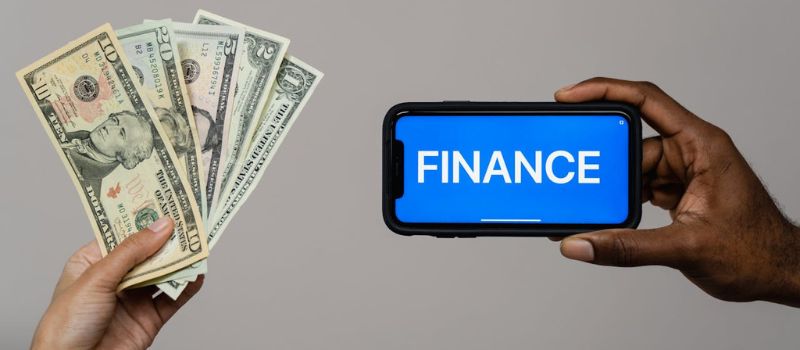
Image Source: Tima Miroshnichenko from Pexels
An online bank should cater to your financial needs like any traditional alternative. Here are a few factors to consider when choosing online banks:
Annual Percentage Yield (APY)
The annual average yield offered under each account will tell you how much interest your money will earn. When comparing online banks, consider one that offers competitive rates across all of its deposit accounts.
Products and Services
Some online banks offer a complete package of banking products, including checking, savings, certificates of deposit (CDs), and money market accounts. They also offer loans and credit cards. So, look at the products and services offered by online banks before making a decision. You may also combine the services of an online bank with a traditional brick-and-mortar bank.
Account Access
Typically, online banks offer 24/7 access to your account through their website or app. However, you should also consider how the bank handles deposits and withdrawals. It is crucial to know the restrictions, if any, on transfers, the limitations on withdrawals, and whether the bank accepts free cash deposits.
ATM Network
An ATM network is essential if you frequently withdraw or deposit cash. An extensive ATM network will help you avoid transaction fees. If the bank is not associated with a large ATM network, you should look for one that will reimburse out-of-network ATM fees.
Digital Tools
The best online banks offer innovative digital tools to help you accomplish financial goals. For example, Ally will help you organize your savings goals with savings buckets and analyze your spending habits to safely transfer available funds from your checking to your savings account.
Fees
You should avoid any bank, online or otherwise, that charges monthly fees or has extensive requirements to avoid them. Many online banks offer no-fee deposit accounts, require a low or $0 initial deposit to open the account, and don’t need a minimum balance to avoid maintenance fees. However, make sure you know whether the bank charges excessive withdrawal fees, paper statement fees, or fees for other services that you may want to use regularly.
Customer Service
Since you won’t have access to in-person customer service with an online bank, determine how you can contact a customer service representative if needed. Most online banks offer telephone support, live chats, or assistance via email. Some online banks also offer access to live support via extended hours or 24/7.
10 Top-Performing Online Banks

1. Alliant Credit Union
Alliant Credit Union is an NCUA-insured online credit union offering members competitive deposit account rates and minimal fees. Most accounts don’t charge maintenance fees, but these can be waived if you sign up for e-statements. Membership is available for current or former employees of Alliant’s partner businesses in the US. You can also become an Alliant Credit Union Foundation digital inclusion advocate to become eligible for membership. Signing up costs $5, but Alliant will pay the one-time fee on your behalf.
Alliant’s certificates earn solid APYs, with terms ranging from one year to five years. Its savings account earns a respectable yield of 3.10% APY on balances of $100 or more, but there are plenty of higher-yielding savings accounts with APYs over 5%. We like that Alliant’s High-Rate Checking account pays a better yield than other checking accounts and doesn’t require a minimum balance or charge service fees.
2. Varo Bank
Varo offers checking and savings accounts but doesn’t offer deposit certificates. Savings account comes with an APY starting at 2.50%. That rate becomes 5.00% for the first $5,000 if a customer meets the monthly requirements of the bank.
Cash deposits have limits and fees, and Varo customers can only deposit cash at a 3rd party retailer that joins the Green Dot network, including CVS, 7-Eleven, or Walgreens. On the other hand, cash withdrawals can be made through an ATM in the Allpoint network for free.
3. Ally Bank
Established in 2009, Ally Bank is full-service online bank that offers competitive rates on all deposit accounts. Customers can enjoy the highest rates for all balances, regardless of tier. Overall, the high APYs, minimal fees, and reliable customer service support makes Ally an excellent banking solution for millenials who want better savings and retirement plans.
4. Discover Bank
Discover Bank offers deposit accounts, credit cards, personal loans, and student loans. We like that Discover offers deposit accounts, such as CDs, savings, and a money market account, at competitive rates with no fees. While its $2,500 minimum deposit requirement for its CDs is steep, there is no minimum deposit required to open and maintain a savings, money market, or checking account.
5. Laurel Road
Laurel Road, powered by KeyBank, helps healthcare and business professionals achieve their financial goals. They offer student loan refinancing, mortgages, personal loans, credit card, and specialized savings accounts. Laurel Road also offer Loyalty Checking with a low APY. New customers can earn a sign-up and monthly bonus with qualifying direct deposits. In addition, both savings account and checking account has no monthly free or minimum balance requirement.
6. Capital One
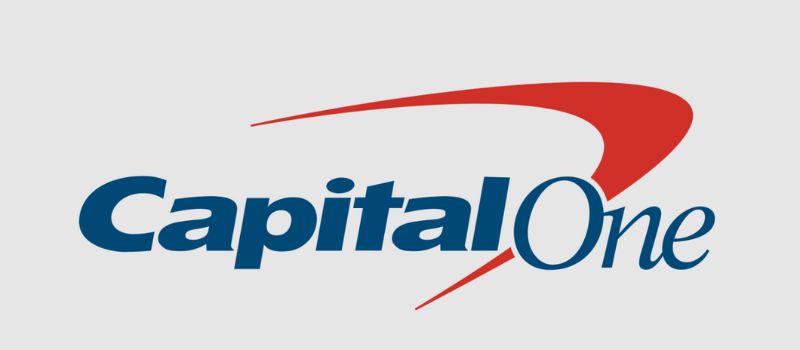
Capital One offers an above-average 3.80% APY on its savings account, strong rates on its certificates of deposit, and 0.10% APY on all checking balances. All accounts are free, and customers can access over 70,000 free ATMs.
7. American Express National Bank
This bank offer High Yield Savings Account with a 3.80 APY. Likewise, certifcate deposits (CDs) have competitive rate and there is no minimum opening deposit. You don’t have to worry in case you encounter banking-related issues because American Express National Bank has 24/7 phone support and online chat support.
8. Marcus by Goldman Sachs
Launched in 2016, Marcus is the online-only banking arm of Goldman Sachs, one of the 15 largest banks in the US. The bank’s savings accounts and CDs offer competitive yields and no monthly maintenance fees.
While some online banks offer no minimum deposit requirement to open an account, Marcus requires a $500 deposit to get started with a CD. There’s no minimum deposit requirement for its high-yield savings account. Marcus doesn’t offer a checking account or money market account.
9. My Banking Direct
My Banking Direct is the online-only arm of Flagstar Bank, N.A., which New York Community Bancorp owns. The bank is a lean financial service that offers only savings, checking, and a five-month CD term. The APYs on its savings account and CD are among the best available today.
In addition, the bank doesn’t charge monthly or overdraft fees and provides surcharge-free ATM access through a 55,000 Allpoint and Presto network. To open a savings account, you must deposit $500. Checking accounts can be opened with just $1. During the week, you can access extended customer service hours until 8 p.m. ET and 2 p.m. ET on Sundays.
10. SoFi
SoFi (short for Social Finance) was the brainchild of Stanford Graduate School of Business students who created an alumni-funded lending source initially focused on refinancing student loans. Since then, SoFi has expanded into a variety of loan categories and now offers online checking and savings accounts.
Conclusion
Online banks lets manage your money and account via a website, mobile device, or app. Also, online banks generally offer higher interest rates and fewer fees than traditional banks. You should remember that while technology makes everything accessible, online banks also have some limitations. For instance, online-only or internet-only banks lack in-person interaction. However, if you are comfortable managing your money online, online banks are a convenient and low-cost option.
Business
The Latest In The AI Boom: What Entrepreneurs Need To Know In 2025
Published
2 months agoon
January 24, 2025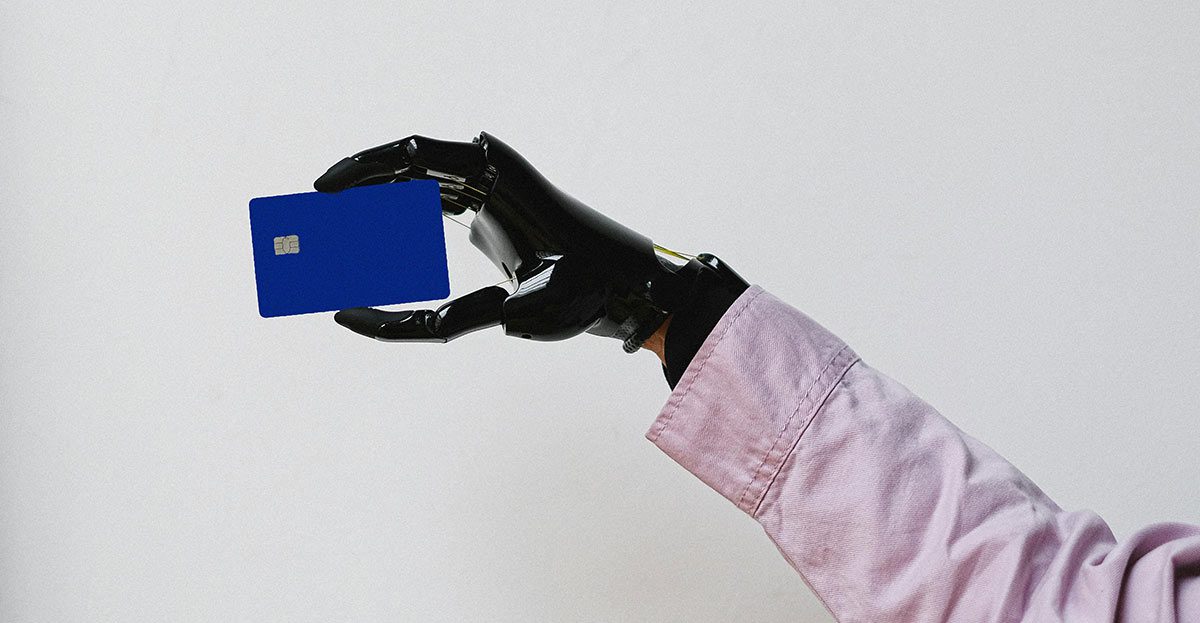
Anyone unaware of how AI is revolutionizing almost everything we do daily could be living under a rock. Artificial intelligence has evolved at an unprecedented speed, transforming industries and reshaping how we operate businesses. Let’s explore the latest developments in the AI boom and what entrepreneurs can do to stay competitive.
AI’s Current State in Business
According to recent industry reports, the AI market is expected to surpass $1 trillion by 2030, with an annual growth rate of more than 35%. This is why businesses across all industries are investing heavily in AI technologies. Whether startups or global enterprises, they do this to stay competitive and meet the evolving expectations of their clients.
How Businesses Are Using AI to Gain a Competitive Edge
AI use by many companies is now commonplace thanks to its many benefits. There’s the enhanced efficiency, boosted productivity, and improved customer experience, among many others. Some of these applications include:
- AI-Powered Automation: Repetitive tasks such as data entry, customer service interaction, and marketing campaigns can now be done using AI. It frees you up to give you more valuable time and resources.
- Predictive Analytics: With AI technology, vast amounts of data to forecast trends, customer behavior, and market demands are easily within your reach. This helps you make better decisions.
- Personalized Customer Experiences: Chatbots and AI-driven recommendation engines are just two examples of how AI can help you provide more tailored customer experiences. It also allows you to deliver hyper-personalized content and services previously available.
- Operational Efficiency: AI optimizes supply chains, inventory management, and logistics. This helps reduce costs and improve your turnaround times.
Many businesses nowadays are using AI to disrupt industries while achieving success. You’ll find AI-powered chatbots handling customer support and content creation, while e-commerce platforms use AI-driven recommendations to boost sales, as Shopify exemplifies. In health care, AI improves diagnostics and treatment accessibility, while marketers use AI for data-driven campaigns and optimized ad spending.
Emerging AI Trends You Need to Watch
Source: Rahul Pandit on Pexels
It seems that entrepreneurs have no option but to embrace the transformative trends brought about by AI. The following are a few you must take note of:
- AI-powered automation is simplifying operations and cutting costs.
- Generative AI is revolutionizing content creation, marketing strategies, and product design.
- AI in customer service uses chatbots, personalization, and predictive analytics to meet growing demands.
- AI ethics and regulation ensure businesses comply with evolving laws and ethical standards.
- AI-driven decision-making helps businesses gather data insights for smarter, more strategic choices to drive long-term growth and success.
Must-Have AI Tools for Entrepreneurs in 2025
It’s not getting on the bandwagon but keeping up with the times. Here are a few examples of AI tools you can use for efficiency and growth:
- Marketing and SEO: Tools like Jasper and SurferSEO can help you craft optimized content, analyze trends, and improve search rankings with ease.
- Sales and CRM: HubSpot AI and Salesforce Einstein offer intelligent automation, customer insights, and predictive analytics to boost sales performance.
- Productivity and Automation: Zapier AI is an excellent option for task automation, while Notion AI is great for smart content organization.
- Finance and Analytics: Quickbooks AI and Tableau AI provide real-time financial insights, forecasting, and data visualization.
When choosing the right AI tools for your business, consider scalability, integration capabilities, ease of use, and cost-effectiveness. Make sure they align with your business goals and your workflow needs.
The Challenges Entrepreneurs Face in Their Adoption of AI
Source: Google DeepMind on Pexels
Admittedly, AI has immense potential; however, adopting it comes with challenges that entrepreneurs must navigate. Below are a few:
- Cost Consideration and ROI Expectations: When you implement AI solutions, you may need significant upfront investment. Also, measuring long-term returns can be complicated.
- Skills Gap: You will wonder if you need AI expertise or if you can rely on external support to use AI in your business effectively.
- Data Privacy and Security Concerns: Protecting sensitive customer information while ensuring compliance with data protection regulations can be challenging.
- Overcoming Resistance to AI Integration with Your Team: Your team members may fear job displacement or struggle adapting to new AI-driven workflows and tools.
Practical Steps to Integrate AI into Your Business
Here are a few easy steps to take if you want to integrate AI into your business:
- Assessment of Your Business Needs: Identify which areas of your business would benefit from the technology. Is it customer service, operations, or marketing?
- Start with Low-Risk Implementations: Look for small-scale projects that are easy to implement and carry minimal risk. You can start by adopting AI-driven tools for marketing, chatbots for customer support, or simple automation tasks.
- Measure AI Impact and Scaling: Assess the performance and impact of your chosen AI solutions on your business. Measure key metrics like productivity, cost savings, and customer satisfaction. This way, you’ll find out if your AI adoption is giving the value your business needs. Scale its use as you gain confidence and see more positive results.
- Partner with AI Consultants: Work with AI experts or consultants to guide the integration process. This ensures you’re using the right tools and strategies. This can also help you overcome any technical challenges you may face.
The Future of AI in Entrepreneurship
Market research firms, AI experts, and thought leaders see AI going through the following:
- AI’s role in startups and small businesses will become essential, providing them with affordable solutions to automate tasks, enhance marketing, and improve customer service, leveling the playing field with larger companies.
- AI will transform industries such as healthcare, retail, and finance. It can dramatically improve efficiency and customer experiences. It will also create new job roles, requiring business owners to adapt and upskill their workforce.
- Additionally, entrepreneurs must stay ahead of the curve with continuous learning and adaptation. This will keep them competitive and ensure long-term success.
Conclusion
Entrepreneurship has been and will continue to be impacted by AI, but most of it will be transformative. The technology presents significant opportunities to help businesses thrive, leaving no option for business owners but to embrace these emerging trends. You need to start now, keep learning, and integrate strategically.
Business
Omnichannel Marketing Platforms: Definition, Examples & Tools
Published
3 months agoon
December 22, 2024By
Kai Kelis
Omnichannel has become a recent buzzword online. That’s because the business landscape has shifted most of their marketing efforts into virtual communication. Advertisers are always looking for new ways to boost online connections with audiences while increasing sales. This is how “omnichannel” sprouted quickly and into every marketer’s arsenal. But what is omnichannel, and what are some omnichannel marketing platforms that do the job? Read on to find out.
What is Omnichannel Marketing?
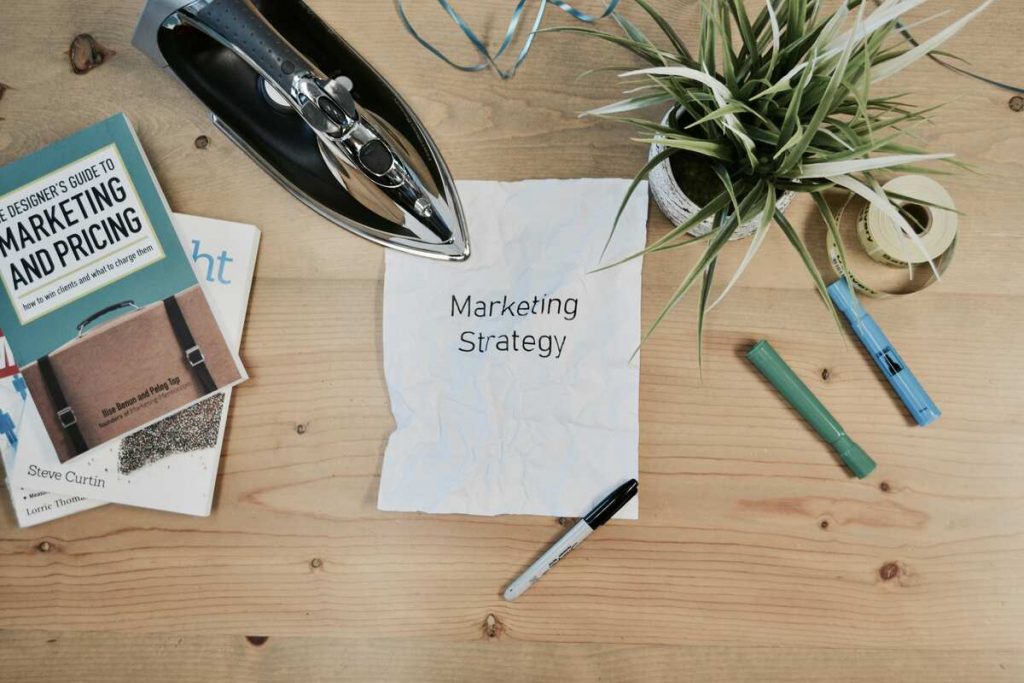
The concept of omnichannel is simple. It aims to provide marketers a quick way to communicate with their customers and get as much engagement and conversion as possible from one go. Their objective is for customers to enjoy a seamless shopping experience on multiple brand channels, including online, mobile, or in-store. This means, marketers would have to show customers the same pricing and promotions across all brand channels.
However, it also goes beyond that. You have to ensure that customers can navigate through different channels with ease. This means customers can switch between your brand channels without any roadblocks. For instance, a customer can order from your online store and have the option to pick it up from your physical location. One way to increase sales is by offering customers additional items to boost order value.
Why is Omnichannel Marketing Important?

Omnichannel marketing is crucial these days since most people have shifted to online browsing and shopping. Moreover, if advertisers market on three or more channels, this could result in a 90 percent higher retention rate compared to using a single-channel campaign.
Additionally, omnichannel marketing also strengthens your brand messaging since campaigns are consistent across all platforms. But what are the primary reasons why advertisers focus on omnichannel marketing?
- Brands will get high customer retention
- Gains customer loyalty
- More personalization in the customer’s journey
- More integrated business
- Better customer insight
- Smooth and enjoyable customer experience
How Does Omnichannel Advertising Work?
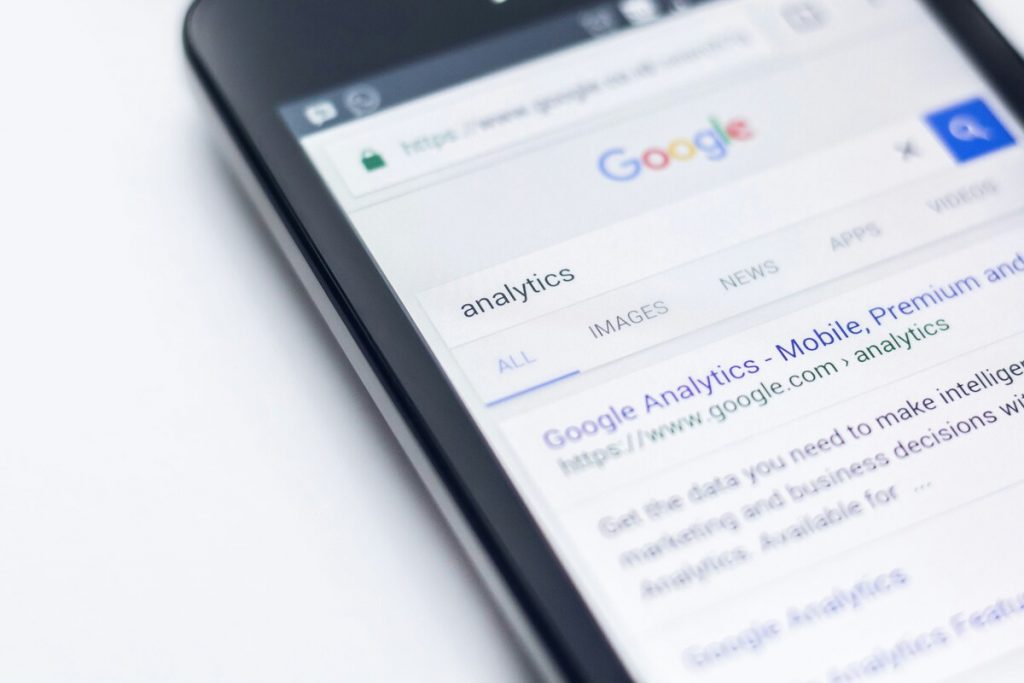
An example of omnichannel marketing is when a sports retail store sends its prospects an email containing a recent promotion on its newly launched running shoes. The email content shows the link to the promotion. Once customers click this link, they are taken to the brand’s eCommerce website. Instructions also let them know they can get it from the brick-and-mortar store.
Another example is when a furniture store shows a behind-the-scenes video on YouTube about how its experts craft their pieces. Once viewers watch the video, they are welcomed with a link inviting them to join the brand’s email newsletter.
10 Omnichannel Marketing Platforms

Here are 10 best omnichannel marketing tools.
1. BigCommerce
This online and offline sales tool is for large-scale businesses looking to streamline their advertising strategies. BigCommerce unifies all marketing campaigns in an easy and convenient platform, including in-store, online, social media, and marketplaces. It can also handle large volumes of sales, traffic, and transactions, providing customers with a smooth experience.
2. NewStore
NewStore is the tool for all your POS and inventory management systems. It can manage orders, inventory, and customer data across the brand’s channels. It also comes with robust marketing tools that offer personalized engagement, such as push notifications, mobile apps, and location-based marketing.
3. Glassix
If you’re looking for the best omnichannel marketing platforms for communication, Glassix sits at the top of the list. It’s an AI-powered advertising tool that helps with email, SMS, live chat, messaging apps, and social media. Using Glassix means tracking all customer interactions and messages in one user-friendly interface is easy. It also lets you send targeted messages to your audiences based on their preferences and behaviors.
4. Desku
In addition to integrating all customer communications in one interface, Desku also helps with automation functions, such as chatbots, canned responses, ticketing systems, and more. Plus, it offers reporting tools and analytics to monitor progress.
5. Omnisend
Omnisend is the platform for all your SMS and email marketing campaigns. It’s best suited for eCommerce businesses and allows advertisers to create, monitor, and automate campaigns across all channels. It offers drag-and-drop features and is extremely easy to use.
6. Tidio
When searching for the best omnichannel communication platform, Tidio ranks high. It’s designed to facilitate customer interactions, manage inquiries, and offer real-time support.
7. Adobe Experience Cloud
You can’t succeed in omnichannel marketing without using a cloud-based service. And Adobe Experience Cloud ensures you get the right cloud-based solution for optimizing customer experiences. You can use this tool to build and manage customer journeys through AI-powered insights. You can also integrate this platform with other Adobe tools like Adobe Experience Manager, Adobe Target, Adobe Campaign, Adobe Analytics, and more.
8. Revealbot
If you’re spending time on paid ads, Revealbot will help you manage them in one user-friendly interface. It’s a marketing tool that helps optimize digital advertising campaigns on Instagram, Facebook, TikTok, and Google Ads. You can use this tool to set automation features, campaign budgets, and custom ad rules.
9. Shopify Plus
Shopify Plus if one of the best omnichannel marketing platforms for eCommerce businesses. It helps create a streamlined customer shopping experience. From workflows and checkouts to customer segmentation and targeted marketing campaigns, this is a reliable tool to use.
10. Oracle CX Commerce
Oracle CX Commerce is the best solution for B2B and B2C businesses. It’s a cloud-based eCommerce platform that helps provide personalized experiences. It also offers advanced features that simplify segmentation, customized content, targeted promotions, and customer engagement.

Digital Nomads Flock To These 10 Amazing Tax-Free Cities

Adopting a Cat? Here’s Your 5-Item Starter Kit

Discover 2025’s Top 10 Online Banks for Smart Savings

The Latest In The AI Boom: What Entrepreneurs Need To Know In 2025

Taylor Swift’s Fortune: The Billionaire Behind The Eras Tour

8 Popular Mobile Payment Systems







